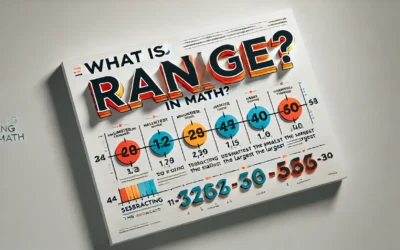Introduction: Understanding the Philosophy of “Slow is Smooth and Smooth is Fast”
In a world where speed is often glorified, the phrase “slow is smooth and smooth is fast” stands out as a profound principle. This phrase originated from military training, where soldiers are taught that moving too quickly can lead to mistakes, while a controlled, steady approach ensures both accuracy and efficiency. However, this philosophy extends far beyond the battlefield.
When applied to everyday life, work, and personal development, “slow is smooth and smooth is fast” reveals the secret to mastery. By taking deliberate, measured steps, we avoid errors, build strong foundations, and ultimately move faster in the long run. In contrast, rushing through tasks often results in setbacks that require more time to correct.
The modern world prioritizes speed, but at what cost? From businesses pushing unrealistic deadlines to individuals striving for instant success, the pressure to move quickly can lead to burnout and subpar results. The reality is that slowing down doesn’t mean falling behind—it means preparing for lasting success. By focusing on smooth execution, we reduce errors, improve efficiency, and achieve sustainable progress.
The Science of Slowing Down: Why Going Slow Leads to Better Results

Science supports the idea that “slow is smooth and smooth is fast” in various fields, including learning, skill development, and productivity. Our brains process information more effectively when we take our time to understand it rather than rushing through. Studies on deliberate practice show that repeated, focused efforts improve performance more than quick, haphazard attempts.
For example, in skill-based activities like playing an instrument, martial arts, or sports, rushing leads to mistakes. However, when learners slow down and practice movements methodically, they develop muscle memory that eventually allows them to perform with speed and accuracy. “Slow is smooth and smooth is fast” explains why mastering small details first leads to greater efficiency in the long run.
Moreover, cognitive overload occurs when we try to process too much information at once, reducing our ability to focus and increasing stress. By embracing a steady, calculated pace, we enhance our cognitive function, allowing our brains to absorb, retain, and apply knowledge more effectively.
Application in Personal Growth and Productivity
Many people assume that slowing down in their personal or professional lives means achieving less, but the opposite is true. When we embrace “slow is smooth and smooth is fast,” we cultivate patience, focus, and consistency—three essential ingredients for long-term success.
In personal growth, taking small, consistent steps is more effective than rushing toward big changes. Whether learning a new language, developing a healthy habit, or building a career, steady progress ensures deep learning and lasting results. For example, someone who spends 20 minutes a day exercising with proper form will achieve better fitness results than someone who rushes through intense workouts with poor technique.
In the workplace, prioritizing quality over speed leads to better outcomes. Professionals who methodically complete tasks with attention to detail avoid costly mistakes and rework. Businesses that follow “slow is smooth and smooth is fast” principles cultivate a culture of efficiency, reducing stress and improving overall performance.
The Role of Precision in High-Performance Professions
The concept of “slow is smooth and smooth is fast” is particularly evident in high-performance professions where precision is crucial. Military training teaches soldiers to move deliberately, ensuring that every action is precise and efficient. Rushing through maneuvers can lead to mistakes that cost time, resources, and even lives.
Similarly, athletes, musicians, and surgeons rely on slow, methodical practice to refine their skills. A basketball player perfecting their free throw, a violinist mastering a complex piece, or a surgeon performing delicate operations all benefit from a steady, controlled approach.
Emergency responders and medical professionals also embrace this philosophy. Paramedics, for example, must act quickly, but their actions must also be calculated and precise. A rushed, frantic response can lead to errors, whereas a smooth and practiced approach ensures efficiency and effectiveness.
Overcoming the Fear of “Slow” in a Fast-Paced World

One of the biggest challenges of adopting “slow is smooth and smooth is fast” is overcoming the fear of falling behind. Society constantly pushes for faster results, but speed without precision leads to more failures and wasted efforts. To shift our mindset, we must redefine success—not as how quickly we finish something, but how well we do it.
Breaking the habit of rushing starts with self-awareness. Identifying areas where we tend to speed through tasks and consciously slowing down helps retrain our brains. Mindfulness practices, such as deep breathing and focused attention, also reinforce the benefits of working at a steady pace.
It’s also important to remember that true efficiency is not about doing things quickly but doing them right the first time. “Slow is smooth and smooth is fast” teaches us that by prioritizing accuracy and precision, we ultimately achieve our goals faster than if we had rushed and made mistakes along the way.
Conclusion: Mastery Through Patience and Precision
The phrase “slow is smooth and smooth is fast” is more than just a saying—it’s a mindset that leads to mastery, efficiency, and success. By slowing down, we eliminate unnecessary errors, build strong foundations, and ultimately achieve our goals with greater ease.
Whether in personal development, professional work, or high-performance fields, the key to long-term success lies in precision and consistency. When we embrace a steady, deliberate pace, we move smoothly—and when we move smoothly, we move fast.
FAQs (Frequently Asked Questions)
Q1: Where did the phrase “Slow is smooth and smooth is fast” originate?
A: This phrase originated in military training, particularly in the U.S. Navy SEALs, where soldiers are taught that deliberate, controlled movements ensure greater efficiency in high-stress situations.
Q2: How can I apply this principle in my daily life?
A: You can apply this principle by focusing on precision in your tasks, practicing mindfulness, and avoiding the urge to rush through activities. Taking your time to do things correctly will ultimately save time.
Q3: Does slowing down mean I will take longer to achieve my goals?
A: Not necessarily. By slowing down, you build strong skills and foundations, reducing errors and setbacks. This approach often leads to faster overall progress.
Q4: How do I balance speed and efficiency in a fast-moving environment?
A: The key is to prioritize smooth, controlled actions over hasty movements. Planning, practicing, and executing tasks with focus and precision will help you maintain efficiency without unnecessary delays.
Q5: What are some real-life examples of this principle in action?
A: Examples include professional athletes perfecting their techniques, musicians practicing slowly before playing fast, and emergency responders executing precise, well-trained movements to handle critical situations effectively.
By embracing “slow is smooth and smooth is fast,” we unlock a powerful strategy for success in every aspect of life.









